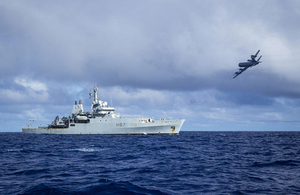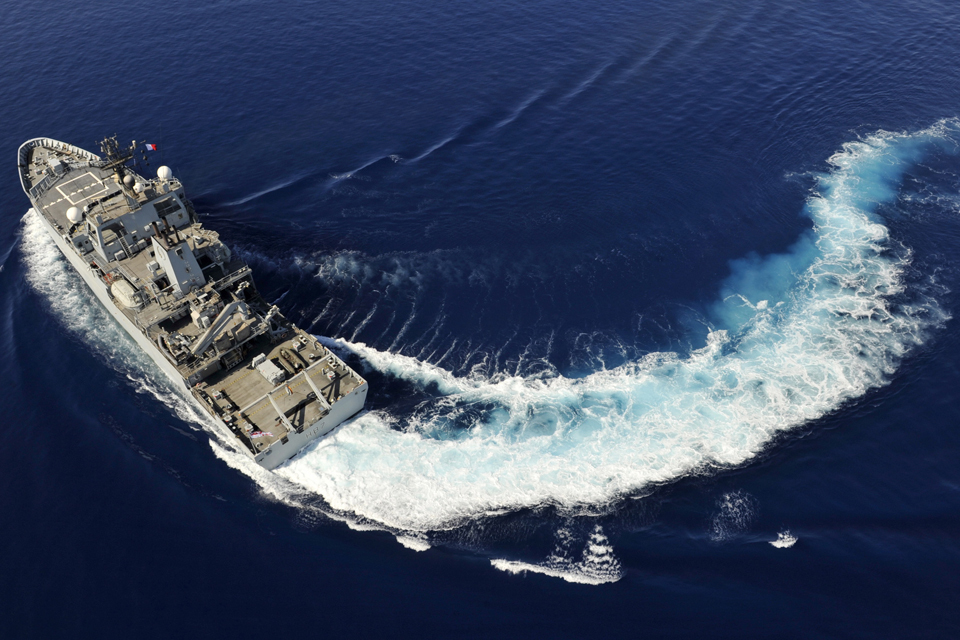HMS Echo continues hunt for missing Malaysian airliner
The Royal Navy hi-tech survey ship is working as part of an international task force to search for signs of the missing jet.

A Royal Australian Air Force AP-3C Orion aircraft passes over HMS Echo [Picture: Crown copyright]
HMS Echo is scouring the southern Indian Ocean to find the ‘black box’ flight recorder from missing flight MH370, which disappeared from radar screens on 8 March 2014 with 239 people on board.
The ship was en route from Salalah in Oman to conduct survey operations in the Seychelles when the call came in on 19 March to change course.

HMS Echo personnel deploy the vessel's SeaSoar vehicle, which can be towed behind the ship at controlled depths and carry a wide range of sensors and oceanographic equipment [Picture: Crown copyright]
Echo is using specialist survey equipment to listen for the ‘pings’ from the black box. The equipment has been specifically modified to undertake this task and it is being operated in this way for the first time. Since arriving in the search area on 2 April 14 she has covered 6,000 square miles of ocean.
HMS Echo’s Commander Phillip Newell said that the search so far has been challenging, not least because bad weather has made picking up signals under the water difficult. He said:
I have 20 years’ experience of trying to find things on the sea bed; it’s pretty much my day job. I have a brilliant team, young, bright and enthusiastic and we are working 24/7 to cover the sea bed and observe on the surface.
There’s a sense that we are playing an important part in this role and we are keen to get it right.

Aerial photograph of HMS Echo (stock image) [Picture: Senior Aircraftman Dave Vine, Crown copyright]
Over the last couple of days Echo has been conducting oceanographic observations to support the Australian defence vessel Ocean Shield.
Commander Newell said:
The key thing is to help their understanding of what is going on, and how it is affecting the ocean column. The key challenge is to try and refine all of the observations they are making.
The crew is also directing an Australian AP-3C Orion aircraft on where best to drop sound-locating buoys into the water.
A number of pieces of debris have been recovered from the ocean by Echo’s ‘swimmer of the watch’, but unfortunately all have been confirmed as not being from Flight MH370.

A sailor scans the ocean from HMS Echo's deck [Picture: Crown copyright]
In addition to Echo, Royal Navy nuclear submarine HMS Tireless is also working as part of the coordinated international search. Her sonar, like Echo’s, is listening for the ‘ping’ sent out every second by the black box transponder.
Royal Air Force personnel have also been flying in the Royal Australian Air Force and Royal New Zealand Air Force maritime patrol aircraft, scouring the waters from above, looking for debris and dropping listening buoys.